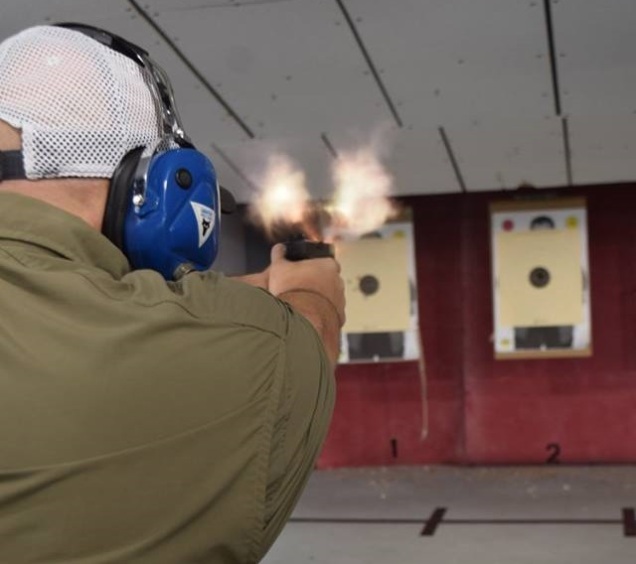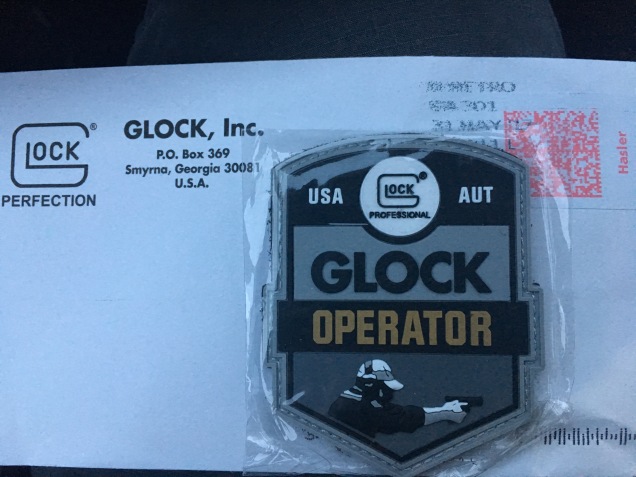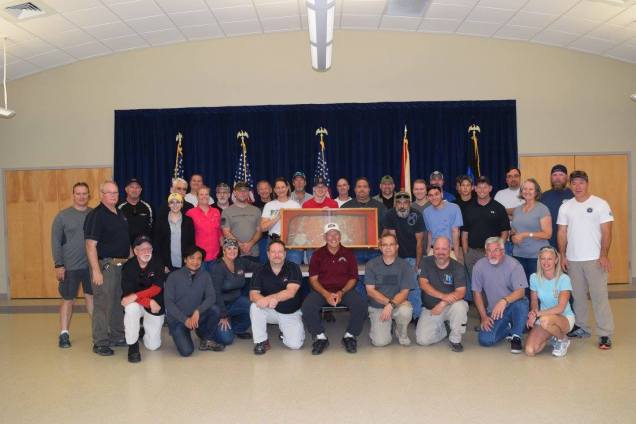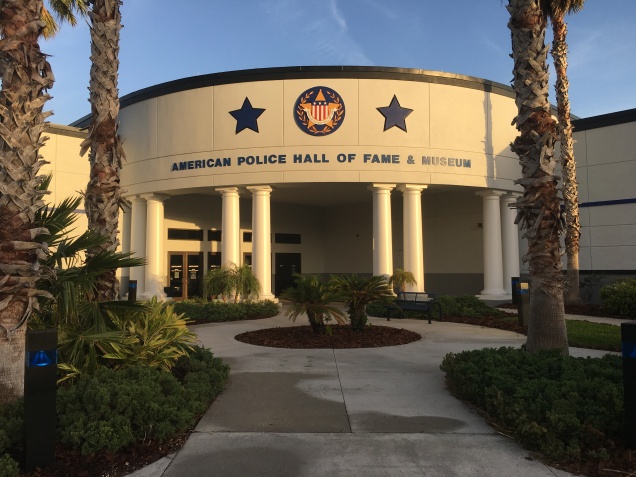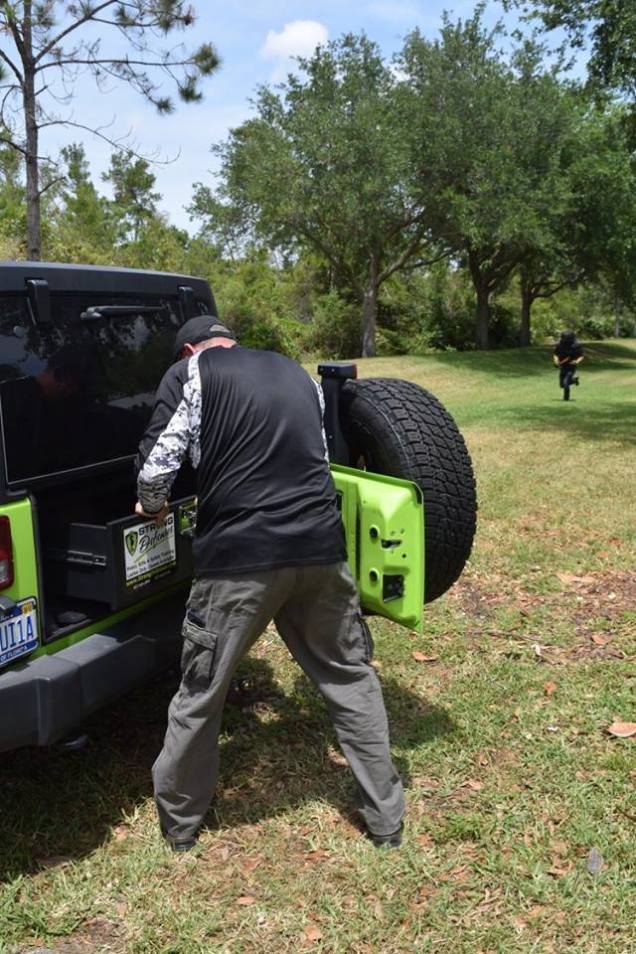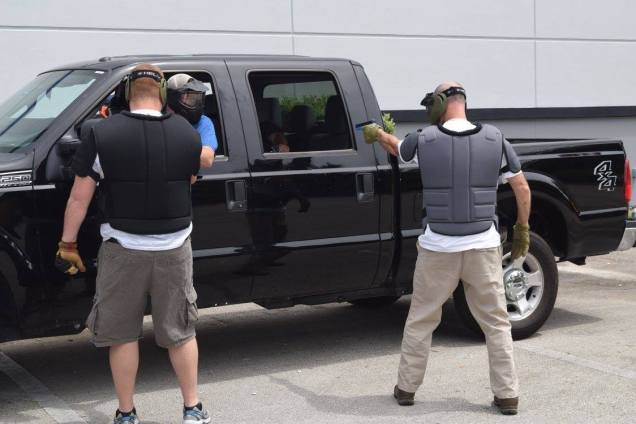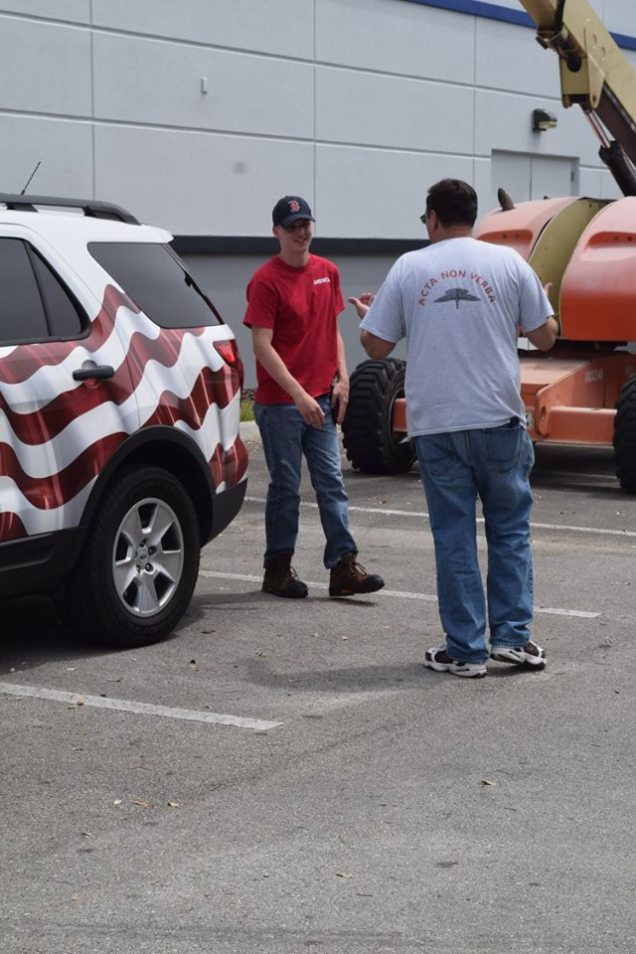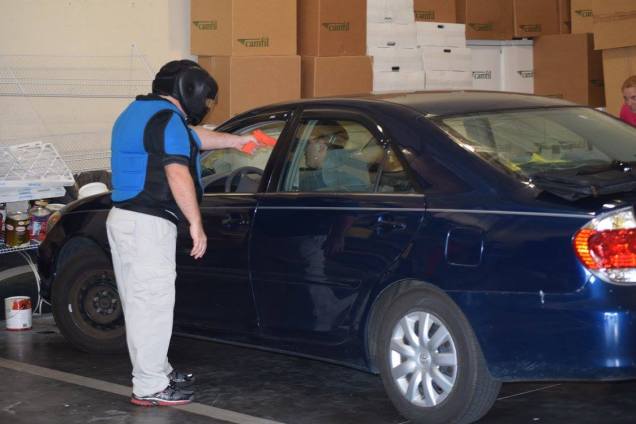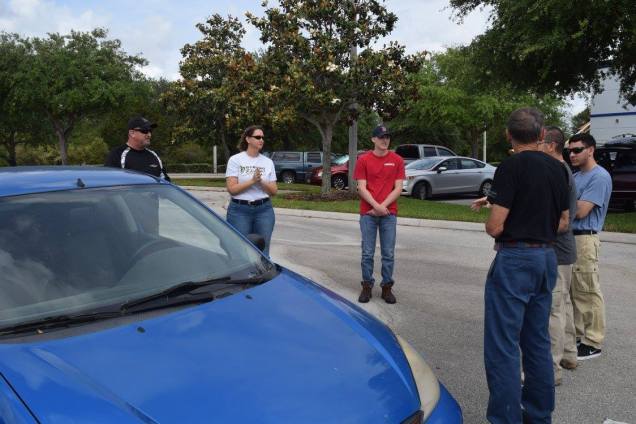
On Sunday, June 25th I boarded a Southwest Airlines jet at Tampa International Airport and after a plane change in Baltimore I arrived in the state with the very best motto of all, “Live Free Or Die.” I traveled to New Hampshire to attend the Master Pistol Instructor Course at SIG SAUER Academy. After claiming my baggage and getting my rental car, (By the way, I was given a free upgrade by Enterprise to a Ford Escape, exactly what I drive at home) I set the Waze application in my iPhone for 233 Exeter Road, Epping, New Hampshire. Upon my arrival, I was greeted with the view pictured above. This is a place that I have wanted to visit and obviously train at for a very long time.
SIG SAUER Academy is a world class training facility situated on 140 acres, the cadre there offer 110 different courses in many different disciplines. Several months ago I talked my good friend Dave from upstate New York to join me. This course is a performance/objective based course that is only conducted a handful of times per year at the Epping facility.
On my initial visit, I found SIG SAUER Academy to be as advertised and I was thoroughly impressed with all of the facilities, the friendliness of the staff, and of course the well-stocked Pro Shop on the property. (Please keep reading, I haven’t even come close to covering the good stuff yet)
After visiting the facility Sunday afternoon I went to check in at my hotel. I chose the Hampton Inn & Suites in Exeter just a couple exits away off Route 101. SIG SAUER Academy has a corporate rate for students attending courses with them, the Fairfield Inn & Suites and also The Exeter Inn as well. Being a Hilton Honors member also made it an easy choice as well.
My friend Dave arrived a short time later and we headed out to see the Atlantic Ocean and to have dinner in North Hampton. After dinner, we had some ice cream at The Beach Plum across the road from a public beach. The local patrons at the ice cream shop gave me a strange look when I asked, “what the heck are Jimmies?” For goodness sake people, just call them what they are, sprinkles. (Below is a great view of the Atlantic just off Ocean Boulevard 1A at Fox Point)

On Monday morning at 0830hrs, we started TD1 in classroom #7 with 17 students and SIG SAUER Academy Senior Instructor and Training Manager Steven Gilcreast. Steve started by having us fill out and endorse the SIG SAUER Firearm Safety Rules document and then we filled out and endorsed their General Release of Liability and Assumption of Risk document. The second document required a witness endorsement, this should sound familiar to those who have trained with me before.
Next up we made a “chow plan.” The chow plan at SIG SAUER Academy is pretty darn good. Hammersmith Sandwich Company delivers to the Pro Shop and all you have to do is pay your $12.00 at the sales counter and then pick up your lunch from Training Coordinator, Kathleen Randolph. Ordering from the Hammersmith menu is a great option for you, so budget for it because there is little time to leave the property and come back from lunch; however, for those who want to try it, there are a few fast-food restaurants close-by. Oh, by the way, the Cranberry Walnut Chicken Salad Wrap is unbelievable, I had it both days and it was more than enough to do me right.
Steve then asked who needed firearms and ammunition. If you read the course descriptions you will find this statement tied to all courses at the Epping location. “Tuition includes free loan of firearms, holsters, safety glasses, and hearing protection at the Epping facility only.” Now, how cool is that? We had several students from Canada and one from the United Kingdom who took loaner guns and gear both days. You can also purchase ammunition from the Pro Shop as well, so all you need to do is show up in Epping and they will give you all the gear to run the course, just buy the ammunition and you are good-to-go. You got to clean or wipe them down when you are done, just putting that out there, so you have an informed expectation.
After all the administrative work was completed, we got right into a PowerPoint presentation and our workbooks. (See Below)

Steve said, “the course objective, is to give you knowledge” and that is spot on. If you come to this course with an open mind and ready to learn you will learn a lot because there is a lot of information that your brain will need to process. Be prepared to take a lot of notes. As an observation, I noticed that on TD1 my friend Dave and I were the only two students taking notes in both the classroom and on the range. That changed on TD2 with several other students taking notes on the range with us.
Steve went on to describe the evolution of the Master Pistol Instructor Course and the difference between “Instructors” and “Qualifiers.” I am quite familiar with the difference as I know one “Gun Pretender” in particular that I trained with back in 2015 and 2016 that if you ask him to diagnose faults with shooting fundamentals he might say something smart like, “get your hits” or “suck less.” There is an important reason why I bring this up, Steve told us of his own faults as a shooter and gave his own example of a “Gun Pretender” that he trained with as he was struggling with trigger control when he was a sworn law enforcement officer. Steve was told in order to fix his trigger control issues he needed to, “shoot more.” Seriously, now how in the heck does that help anyone? It doesn’t, all it does is allow the shooter to reinforce bad techniques.
The message here is to stay away from “Gun Pretenders” who are good at telling you what you are doing wrong, but short on the substance of what you need to do right and the why behind it. Steve can diagnose the faults in your fundamentals and make you a better shooter, you just need to be willing to put in the work.
The Master Pistol Instructor Course is not a traditional instructor course in the sense that you are not required to give any presentations or demonstrations; however, you are expected to coach your partner and hold him or her accountable for perfect practice throughout the drills that Steve assigns during the course. Also, this is a course that will expose weaknesses in your own fundamentals; however, it will teach you how to strengthen those weaknesses as well. (More on that later)
Important Note: This particular program of instruction tends to help the person who has “performance-based objectives.” You ask, what are performance-based objectives? They are objectives that a student is there to learn something new and more importantly try new techniques that will help them become a better shooter and or teacher. Yes, students have objectives, some are hidden and some are not. Just ask them, they will tell you. If you are going to SIG SAUER Academy to get a certificate I would suggest that you reassess your trip and go there to learn something, the certificate will happen. (More on that later)
We’ve all seen it before, people who go to courses to get a certificate or punch a ticket. Those are outcome-based objectives and some of my best friends fall into that category. To go a little further these friends of mine chase the Dogma of people who are just looking to extract their hard-earned discretionary income and then laugh at you and talk about how much money they are making during the course or worse, they back-stab you in the training community after the course and obviously give you little to no value for the money you have spent with them.
SIG SAUER Academy is NOT that kind of place. It is run by professionals for professionals, that is why on their sign out front it reads, “Where the professionals’ train.” SIG SAUER Academy is an excellent value for your training dollar, and if you do not take a trip there to attend a course, you are definitely missing out. You can thank me later; however, I encourage you to keep on reading.
Steve emphasized the adult learning theorems of hear, see and do, or as the SIG SAUER Academy method of instruction states in our workbooks; Explain, Imitate, Practice, Reinforce and Review.
Steve is a top-notch teacher, he coaches people through drills and does not over-instruct. The very worst thing an instructor can do is “mother hen” their students and tell them what they are doing wrong. Steve does the exact opposite, he cares about his students and does his very best to give personal instruction.
In our course we had a 17:1 student to instructor ratio, that is my only gripe, there was little time for much personal instruction from Steve, again he did his best, but there were just too many students for him to spend time with each of us individually. He gave us tips and coaching on what he saw, but again, there were too many students for one person to work with. Not to mention that some students started “practicing” when done with drills screwing up the shot timers of others who were still working on the drills assigned. This could have been easily quashed by having an assistant instructor or two.
If Adam Painchaud, the Vice-President at SIG SAUER Academy asked my opinion and he did in my survey. I would suggest that there be no more than a 6:1 student to instructor ratio in a course like this one. With 3 instructors and 17 students, they could have split the course into two firing orders and then Steve could have had less than a 3:1 student to instructor ratio on the firing line and less than a 6:1 ratio overall. Now I know that math is hard and big corporations want to see net new income to the bottom-line; however, in my course, there were the aforementioned 17 students, we all paid $600.00 each in tuition fees, that is $10,200 in gross income. No, I don’t profess to know the cost per student at SIG SAUER Academy; however, they certainly must have had even one or two more staff instructors somewhere on property that could have assisted Steve with this course and ensured a little more personal instruction. This is not a criticism, it is just an observation that 35 years experience in receiving and giving firearms training courses going back to 1982 has taught me.
Let’s get back to the course content. At SIG SAUER Academy, SIG = Simple Is Good. As we all know, the conscious mind can only focus on one thing at a time and Steve emphasized this to us during each phase of the course by giving us what he called, “talking points” for us to keep focused on and think about while we were working through the drills. I use these talking points to help shooters with focus and to give positive words of encouragement.
If you put in the effort by practicing deliberately and holding yourself accountable to a specific standard, you will see some positive results as long as you are exercising proper technique. SIG SAUER Academy and Steve Gilcreast are all about teaching proper technique.
One thing that stood out to me was when Steve told us of his past training biases. He said that once he got over them and started trying new techniques, he found that some of these new techniques worked for him and they weren’t so bad after all. Steve also owns his deficiencies as a shooter and said, “I figure out ways to screw things up.” You have to like someone who is humble and can own their own deficiencies, Steve is very humble and obviously owns his own deficiencies. (More to come on that exact subject a little later)
Which brings me to the target used in this course. Meet the SSA-BM1 or “Brett” target for short. (Notice the tape on the binder clip in the photo below, all of us used a lot of tape over this two-day course)

This target has very faint scoring lines on it with an 8″ circle placed in the upper thoracic region which is indicative of where you want to hit on a human in a gunfight. There is also a 4″ circle on Brett’s face that is there to signify where you would want to get a hit in a failure to stop drill or if in a gunfight and you needed to shut-off the computer so to speak.
Now, you are probably wondering why the scoring lines are barely visible, that’s simple to explain. It is to make it realistic because there are no scoring lines in real life, besides, if it was easy everybody could do it.
Important Note: For those of you considering attending any course at SIG SAUER Academy that has a standard course of fire test or qualification. A hole made by your projectile in a paper target that touches one of the scoring lines is out, not in.
“If you have to ask, it’s out.” – Steven Gilcreast
Additionally, if you shoot the wrong target during a standard course of fire, both you and the student who owns the target that you shot are disqualified. Do the words “Know your target and what is beyond” make sense to you now?
It would be good to note that Brett is a former SIG SAUER employee. Steve pointed out that when he worked for the company, students would see him on the property and tell him that they shot him a bunch of times, I’d imagine that Brett got tired of hearing that.
At SIG SAUER Academy Steve said that a safe direction is where there are no people, and that is not necessarily down-range. Steve does not allow any “admin style reloads” while the gun is in the holster, period. He also said it was up to us to know the status of our guns and on TD2 there would be a penalty for not knowing it. You will need to attend the course to understand the penalties (Plural), I cannot give all of the secrets away here, nor should I.
Steve emphasized, “holster your gun with control.” Upon hearing that, I asked if the recent shooting with injury on the property a few months ago was done during holstering and he answered in the affirmative. This was no surprise to me, that is when unintended and negligent discharges tend to happen in courses that involve presentations from the holster.
Before we went “hot” on the range Steve laid out the Medical Plan, he asked if there were any Doctors first, then went down the list to Combat Medics, Paramedics, EMT’s etc… He assigned a primary and secondary medical team then assigned two people to be responsible to grab the medical kit. Then he assigned a primary and secondary person to call 9-1-1, he then assigned someone to go to the gate to greet EMS and lead them back to Area 51 where we were located, and someone to go to the Pro Shop and alert Kathleen as to what happened, so they could engage the protocols they have as a company to deal with any type of emergency where EMS is summoned to the facility.
One thing Steve didn’t do is assign someone to take notes for an incident report, nor did he assign someone to make sure that the firing line was clear and make sure everyone had their guns in their holsters. Sure, that is a given with experienced people; however, with a class of seventeen (17) students there were enough bodies to assign these two tasks for safety purposes; however, it might not be part of the SIG SAUER Academy Emergency Procedures as laid out in their range standard operating procedure, in my opinion, it should be, but we all know what opinions are like. (See our Medical Plan in the photo below)

Once the Medical Plan was in place, Steve then explained and demonstrated the SIG SAUER Academy Task, Conditions, and Standards, (TCS’s) and then guess what? All students shot them, cold on demand.
The SIG SAUER Academy TCS’s are a series of drills that are designed to test a shooter’s performance cold on demand, that should make sense to people who have trained with me before. In the SIG Master Pistol Instructor course description under prerequisites, you will find the following statement, “Students failing to meet and maintain our safety requirements and/or who cannot meet and immediately demonstrate the minimum skills required for the specific class may be removed from training.” Nobody was removed from training; however, our performance on the TCS’s gave Steve a basis on how to teach the course because it let him know what skills we needed to work on.
The TCS’s objective is accuracy, if you missed the previously mentioned 8″ scoring circle in the upper thoracic region of the “Brett” target, Steve placed an “X” with an “M” on the score sheet in the box corresponding to the drill next to your name. If you missed the time standard you got the proverbial “X” and a “T” in the box. Before Steve let us see our scores he told us to not think about the outcome, think about improving our performance.
My scores on the TCS’s were as expected, the objective was accuracy and I met that standard on all six drills; however, I missed the time standard on two of the six. Having an informed expectation is important. Now, I’ll tell you exactly where my deficiencies are because the timer doesn’t lie and neither do I.
My empty gun/emergency reloads suck, plain and simple. I am at about a 2.75s reload, that is not getting it done, lots of wasted movement in that time. (I will have a video of me running a 2×2 drill from the holster on TD1 as soon as Steve responds to my email) How do I improve my time? Easy, increase my diligence and deliberate perfect practice at becoming consistent and efficient.
Next was target transitions. I lost a lot of time being a little too precise instead of pressing the trigger when I had an acceptable sight movie. (Only on a square range where targets are static is it called a sight picture) Again, having realistic expectations and knowing that I have some things to work on is a good thing, not a bad thing. As you can well imagine I am currently working on these deficiencies now. For accountability purposes, I have posted proof positive of what I have written above. There were only two, possibly three perfect 6/6 scores, the average was about 2/6 and that is a guess because math is hard. (Just kidding)

Obviously in order to get better on the TCS’s I need to exercise my brain into telling my muscles the proper movements. (There is no such thing as muscle memory folks, you’ve got to train the brain to tell the muscles what to do)
At SIG SAUER Academy they obviously have unlimited resources and each team of two students was issued a Pact Club Timer III for exercises, Dave and I made good use of it. I love my PACT Club Timer III, it is the most versatile shot timer out there. There are those “Gun Pretenders” in the firearms training industry who say that a shot timer or a stopwatch is no good for training, they are typically the same ones who don’t shoot in front of their students. Yeah, that is a shot directly at you if you fall in that category.
![IMG_7730[1]](https://triggercontroldotorg.files.wordpress.com/2017/07/img_77301.jpg?w=636)
Important Note: Please do not ask me to share the SIG SAUER Academy TSC’s and times, it will not happen. Nor will I share with you the Master Pistol Standards Course of Fire either. If you have attended the five-day Semi-Automatic Pistol Instructor course you somewhat have a head start, that is why that course is a feeder for this one. If you have not attended the five-day course, you should plan a trip, travel to SIG SAUER Academy and make that happen.
Back to some more instructional methodology. On the range, Steve said, “the best presentation is one done in reverse.” He has got that right, you can build that particular skill backward from the gun at extension and then going back to the holster.
Another thing taught at SIG SAUER Academy is this …
Consistency + Efficiency = Success this is something I had heard before I trained at SIG SAUER Academy; however, I never wrote it down and I was not putting it into practice consciously, maybe subconsciously, but not consciously.
Did I mention to take a lot of notes? My Rite in the Rain All-Weather Notebook got some good use in Epping. Oh by the way, if you forget yours, you can buy one in the Pro Shop.

When TD1 adjourned I had fired a total of 289 rounds of the expected 900 stated in the course description. TD2 I fired 286 round for a total of 575 rounds, that is only 63.8% of the expected course of fire. Not in that 20% +/- that I expect to shoot when I am at a course like this one. That just means my friend Dave needs to send me the ammunition I sent him back behind the wall to “New Yorkistan” with because I couldn’t fly home with it all due to TSA guidelines.
This is not a knock on SIG SAUER Academy, the course was chock full of knowledge, I just like to see a 20% +/- the disparity in round count that way I feel like I shot enough to get familiar with the drills. Lord knows you are not going to be able to anchor a new skill in a two-three-four or even a five-day course, you’ve got to go home and #DoWork yourself to get better.
On Monday evening my friend Dave and I jumped in my rental car and drove to Kittery, Maine. I had never been to the Pine Tree state before, so this was something I was excited about. I had heard of the Kittery Trading Post before and now I have been there and have a receipt for $40.06 proving that I added to the economy of our 23rd state.

Afterwards, Dave and I had a nice dinner across the road from the Kittery Trading Post and then headed back to our hotels in Exeter. Once I got back to my room, I started in on some dry-fire exercises running five (5) sets of twenty (20) perfect trigger presses in a row using the wall drill that Steve had showed us earlier in the day. I also worked on some empty gun/emergency reloads in between the sets to give my mind a rest.
Dry-fire is mentally challenging when you concentrate and do it correctly. The photo below is SIG SAUER Academy Senior Instructor and Training Manager, Steven Gilcreast explaining the wall drill.

On TD2 at SIG SAUER Academy we started in the classroom with a review of TD1. We also reviewed video that Steve digitally recorded on his iPad through the Coaches Eye application while we were running a 2×2 drill. Ever the coach and teacher, Steve gave us some tips on where we can become more efficient in our body mechanics and as he said many times over the two-day course, any additional movement adds a “time penalty.”
Think about that statement for a minute, what does this mean in a gunfight where the “time penalty” could be your life or the life of your loved one. When you think of it in that context it is a pretty sobering thought, isn’t it?
While we were in the classroom Steve also gave us a reading list of some great books to dive into about all different subjects that have to do with performance. I have read many of them and I appreciated this because I am a voracious reader, in fact, I ordered a few of the books online even before I left New Hampshire. By the way, I read an hour or two every single day and also spend some time in thought every single day as well, I encourage you to do the same.
After completing our TD2 “chow plan” and analyzing the rest of the videos we hit the range.
TD2 on the range was all about working on drills in a manner that was efficient and that allowed us to focus on deliberate perfect practice. We also ran drills with instructions to set a time and then try to beat that time. (This is a practice derived from the teachings of one Pat McNamara, I will be hosting Pat Mac for a T.A.P.S. Carbine Course in January, here in the Tampa Bay area. Contact me for registration information at floridafirearmsinstructor@gmail.com)
Candidly, I found this way of deliberately practicing to be of great value to me, I had heard of it and yet never really used it before. Education without implementation is worthless. Just so you know, I will be employing this methodology in my personal training and my method of instruction soon.
When we broke for lunch I got to work on making sure my gun was properly zeroed. Yes, I know, never go to a course without a properly zeroed gun. Well, I thought that my gun was zeroed as I had bench-rested it the week prior to attending the course; however, I was incorrect.
On TD1 I had some trouble at distance. Twenty-five (25) yards to be exact, the POI (Point of Impact) of my group was appreciably left of my POA (Point of Aim) and I got that worked out the best I could during a short but effective lunchtime range session using an NRA B-8 bulls-eye center. Steve usually gets in his work during his lunch breaks and I was robbing him of some practice time, I am grateful that he allowed me the time to get my feces sufficiently coagulated.
Which brings me to this very important point. Folks, if you do not bring the tools, and more importantly all the parts to fix or adjust your gun with you to a course, then shame on you. My MGW Sight Tool (See the photo below) sure came in handy.

Now, let’s use this as a teachable moment. My handgun was not broken; however, it was not zeroed properly to POA/POI. (Point of Aim/Point of Impact) The lesson is as follows … Never, ever go to a course or more importantly carry a gun that is not zeroed properly. I made a mistake that cost me. (More to follow in that)
After lunch, Steve set up the SIG SAUER Academy TCS’s again and then set up some drills that he came up with using his own ingenuity incorporating some steel targets into our training. One of the drills was his “Far to Near” drill and the other two were his famous “Blaze X” that Pat Mac named, and the last one was “Run-Shuffle-Run.” We had a lot of fun and worked on movement while shooting small plates and getting proper hits on “Brett” as well.
I will post a few videos of Steve from the course on my business Facebook page at www.facebook.com/triggercontrol, one of the drills will be him shooting his “Far to Near” drill and his “Run-Shuffle-Run” drill along with an instructional video or two as well.
At SIG SAUER Academy they teach that the key to any stance or shooting platform is to have balance, mobility, and stability, I’ll add in th word consistency to that and call it good. Many people slid when getting into a shooting position running the drills, myself included. Steve says that is not very efficient and I agree with him.
Finally, late in the day, we shot the Sig Sauer Master Pistol Standards Course of Fire. (No, I am not giving it to you)
Of the seventeen (17) instructor candidates only eleven (11) made the cut and earned a patch. Earning the patch signifies that you passed the qualification at 90% or better. SIG SAUER Academy Standards say that 22 of 25 hits = 90%. Now math is hard sometimes, but simple division says that number is really 88%. We’ll go with their number because it is their course of fire and their standard, and of course because they make the rules.
Now, if you follow my business Facebook page at Trigger Control Dot Org you will know that I was not one of the eleven. No excuses, I DQ’d and I don’t mean Dairy Queen. It doesn’t matter why, other than it was NOT because of a safety violation or rules infraction. Plain and simple though, I had a shot off the silhouette not the target, and that is an instant disqualification as it should be.
I am not happy about it, in fact, I am pissed; however, I remember what I said about informed expectations. Even though I was getting in some work before the course I was not getting in the proper work and I struggled with a gun that wasn’t zeroed. (My fault entirely, that is called having integrity and owning my own deficiencies)
During the qualification, I had to deal with hot brass landing on and sticking to my neck and on my arm. Again, my fault for not turning up my collar and staggering myself off the line a little to give the ejection pattern from the person to my left a wider berth. Listen, I am humble and I own my deficiencies, remember I said that I would mention this again later? Well, as Paul Harvey used to say so eloquently, “and now you know, the rest of the story.”
Let’s talk about fixes for this problem and it is a problem. Seventeen (17) students standing nearly shoulder to shoulder is just way too many on the line for a qualification with only one instructor. I mentioned the fix above is to split the course participants into two firing orders, this is important for the Master Pistol Standards qualification, there is too much on the line to go home without a patch signifying that you made the 90%, err 88% standard.
I believe one firing order was used to save time and that is fine; however, nobody was flying out that night and everyone was perfectly fine with training after 5:00pm, we just had to be done by 6:00pm due to the local range rules. With two firing orders, the qualification would obviously have allowed a much bigger space in between shooters. If this sounds like I am bellyaching, I’m not. Again, thirty-five (35) years of professional firearms training and instruction experience going back to 1982 gives me some perspective on things.
Folks, I am not one to take participation trophies or certificates of completion when I have not earned them by meeting or exceeding the course standards. In pertinent point, I have a certificate in my possession that certifies that I completed the course of instruction in Master Pistol Instructor; however, it is my belief that I have not completed anything until I pass the SIG SAUER Master Pistol Standards Course to the SIG SAUER Academy standard.
One thing is certain, you will never read anywhere that I am claiming to be a SIG SAUER Certified Master Pistol Instructor anywhere in the written word or hear me say it in the spoken word because my integrity will not allow me to do so. My participation certificate will go in a filing cabinet and when I pass the Master Pistol Standards Course and have a patch in hand to prove it, I will then write it and say it, but not until that patch is in hand.
By the way, I am so much the learner that I am taking over 300 hours of coursework this year alone to sharpen my skills, and keep my training methodology relevant and focused on the adult learning theorem. How much training are you taking this year?
In summary, get yourself up to the greater Epping/Exeter “metropolitan” area and take a course at this world-class facility, from a top-notch teacher like Steven Gilcreast, you will be glad that you made the investment, and you can thank me afterward.
Until next time …
Live life abundantly!
Stay Safe & Train Hard!


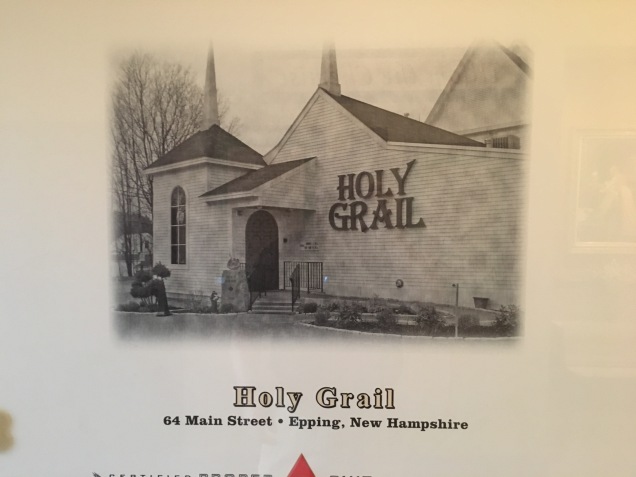


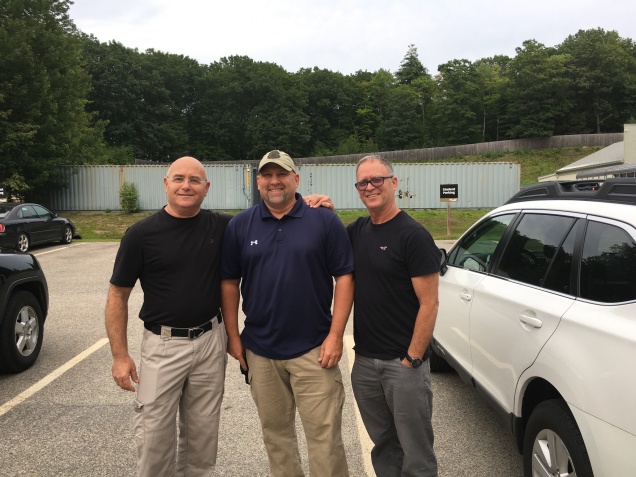

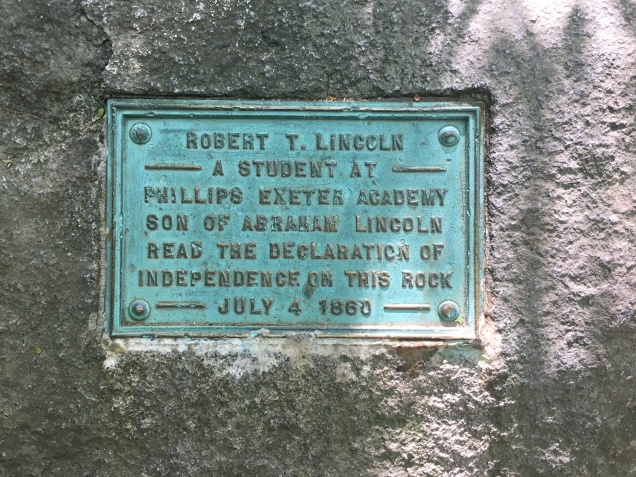
![IMG_8063[1]](https://triggercontroldotorg.files.wordpress.com/2017/08/img_80631.jpg?w=636)









![IMG_7730[1]](https://triggercontroldotorg.files.wordpress.com/2017/07/img_77301.jpg?w=636)










